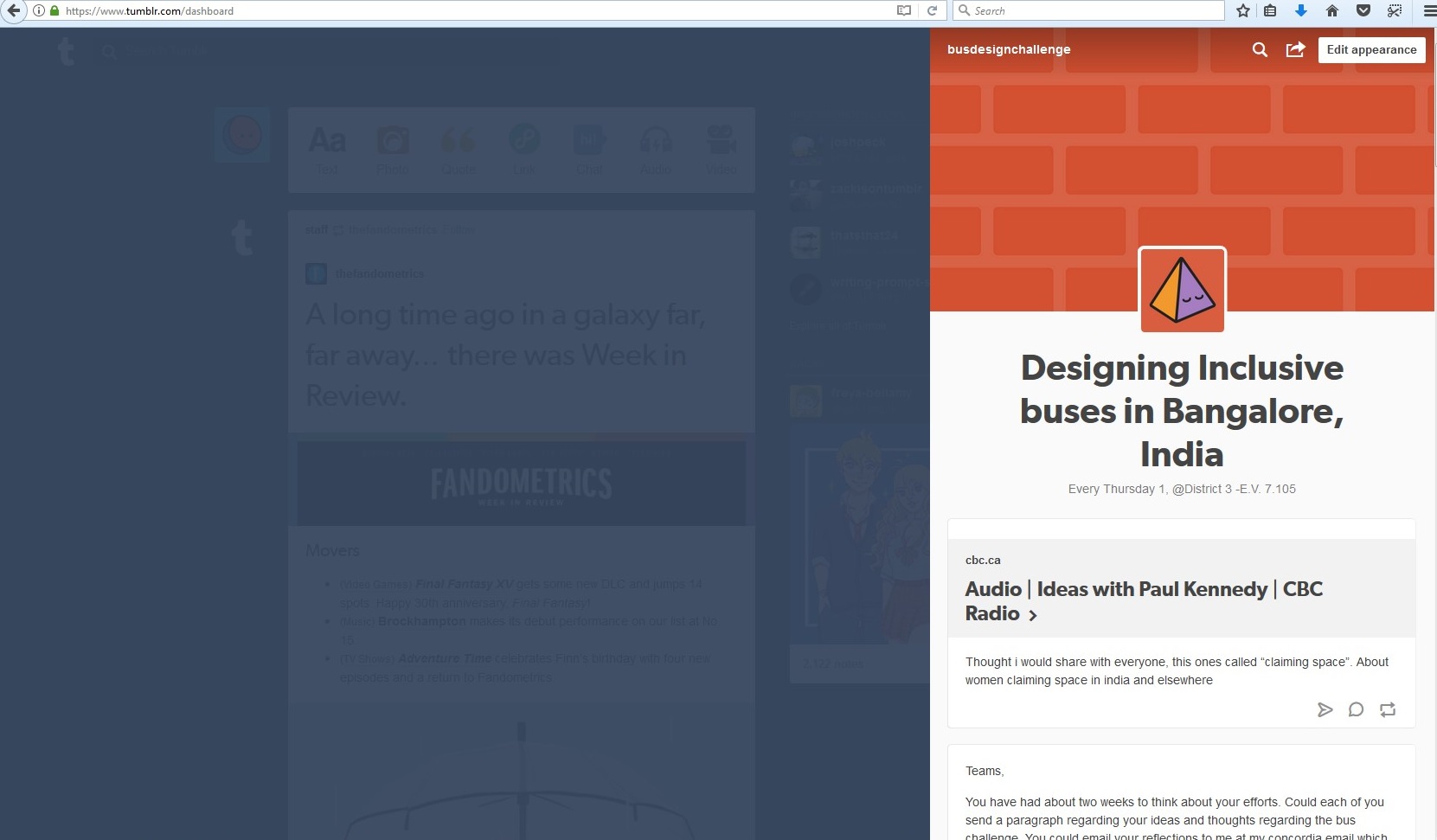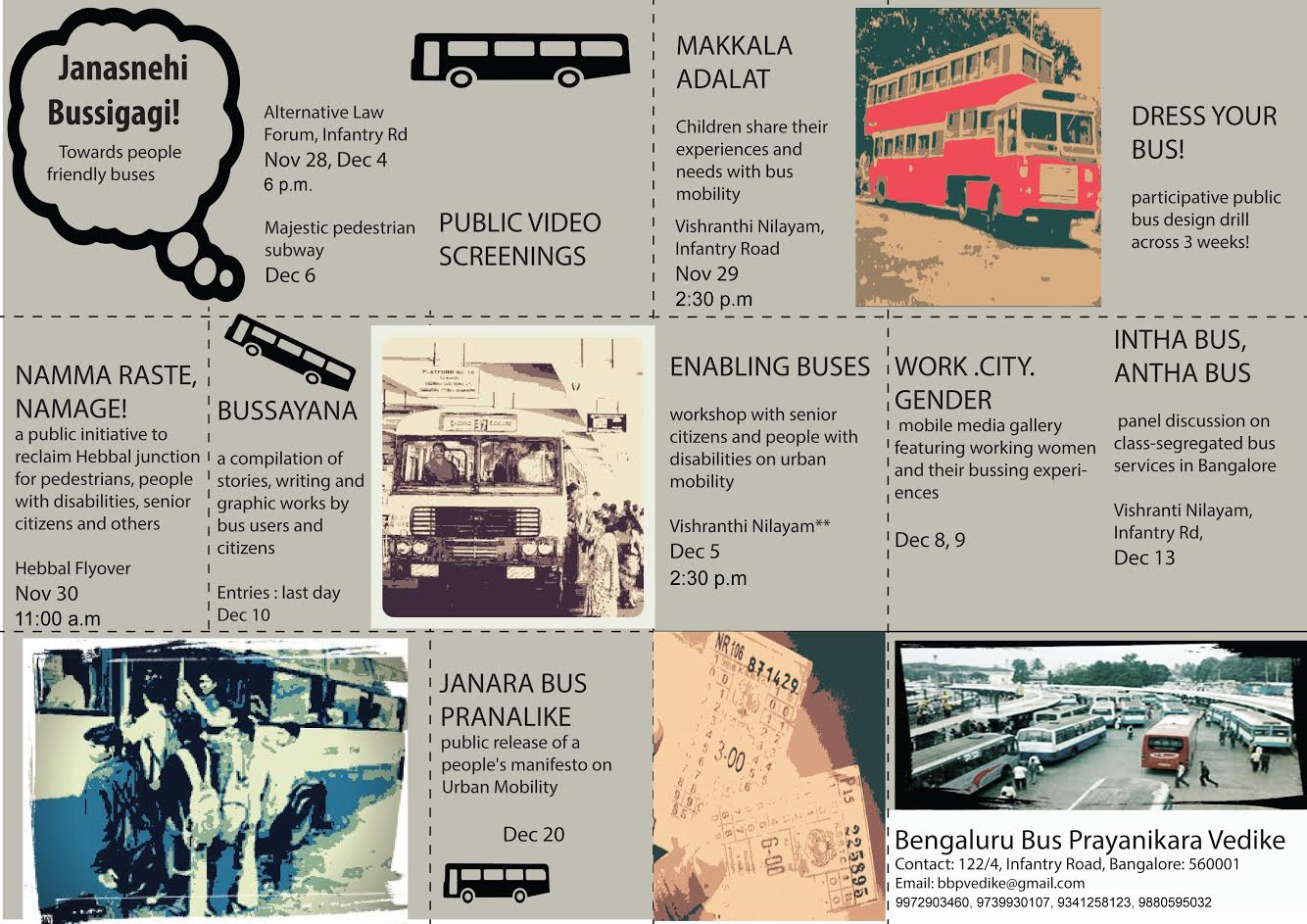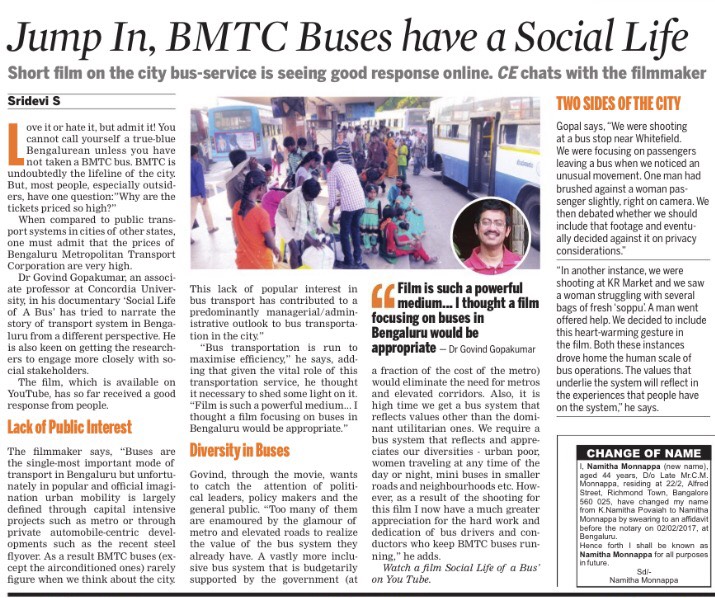Indian Automobility
Overview
Traffic congestion on a key radial road (Old Madras Road) in Bengaluru (Source: Govind Gopakumar)
My current research is to investigate the growing trend in Indian cities to prioritize private automobile transportation to move from one place to another. I do much of my research on Bengaluru (formerly known as Bangalore) - the large Indian metropolis in south-central India inhabited by about 10 million people and their (more than) 6 million vehicles. Growth in automobiles on Bengaluru's streets and on other Indian city streets is a visible part of the trend towards an auto-centric transportation system.
In recent years, traffic congestion with streets choked with private automobiles has become a daily experience. The popular discourse in Bengaluru, as experienced through the English-language media or in middl-class drawing rooms, equates congestion with the the rising population of vehicles on the road. The solution to the problem, according to this discourse, lies in changing the circumstances in which private automobiles travel around the city without actually questioning the fundamental auto-centricity in the transport paradigm in the city.Video of an auto-centric transportation system (Source: Govind Gopakumar)
But it is not only through rising vehicular population on Bengaluru's streets that an auto-centric system of moving around in the city has become normal. The convergence of a whole range of political, economic, and institutional processes as well as technological artifacts and infrastructural designs have contributed to, what I call, the installation of automobility in Bengaluru. Euro-American scholars such as John Urry and Mimi Sheller have conceptualized automobility as a complex techno-political system that has and continues to reorder cities in Europe and North America. Following in the path of these scholars, I suggest that several recent changes have contributed to the reordering of streets and streetscapes in Bengaluru. In inquiring into the installation of automobility in Bengaluru, my research project seeks to understand two facets:
- first, the different techno-political aspects that contribute to the lock-in of automobility in Bengaluru, and
- second, the experience of citizens as they seek to move around the Bengaluru through other modes such as public buses, walking, and cycling.
Research Projects
- Bus design challenge. With the support of District 3, an innovation hub located in Concordia University, I piloted a design challenge for interdisciplinary teams of students at Concordia University. The objective of the challenge was to design Inlcusive buses for the city of Bengaluru. Each team wwas required to do the following: show empathy for those who could be better included within a global transit system; clearly define the issue and focus on enhancing inclusivity; create an innovative idea; and produce a minimal viable prototype. Team ideas were evaluated by a panel of judges that included members from the Bengaluru Bus Prayanikara Vedike or Bengaluru Bus Commuter Forum. The challenge was conducted over a ten-week period from September to November 2014. To create a collaborative environment where judges, experts from Bengaluru, student teams could share thoughts, ideas, and information, a tumblr site was created. Video footage, relevant media and articles, public policy reports were shared on the tumblr site to provide teams with resources to base their ideas. The winning team of Michale Maclean and Pascal Poirier received the opportunity to travel to Bengaluru and present their idea to the forum. Their idea was to approach gender safety on buses through a multi-faceted design strategy that incorporated both communicative and physical elements. They sought to make two design interventions - transform bus stops into inclusive spaces where women would feel welcome to loiter and spend time as a public space. And second, they proposed a communication strategy by creating posters on buses and bus stops as well as flyers for commuters that would communicate the sense of what is harassement, that harassement is not a good thing and that it does not need to be encouraged.
Screenshot of the Bus Design Challenge website (Source: tumblr)
- Manifesto for Inclusive buses. In November 2014, together with Deepak Srinivasan , a performance artist, media practitioner, researcher, and, at that time, a faculty member at the Srishti Institute of Art, Design, and Technology we received funding from the Shastri Indo-Canadian Institute for a Partnership Research Grant to design a manifesto for inclusive public transport buses in Bengaluru. We proposed for a series of public student-drive design charettes and collaborative exercises with members of the public that would lead to the compilation of a manifesto for inclusive buses in Bengaluru. In this effort we were led by Bengaluru Bus Commuter Forum and Alternate Law Forum who brought their ability to mobilize civil society and articulate a powerful pro-poor, pro-inclusivity element to the venture.
Festival for people-friendly buses" (Source: Bengaluru Bus Prayanikara Vedike)
Capitalizing on the resources and energy available through the partnership grant, the Bengaluru Bus Commuter Forum organized these discrete student events into a Bus Festival branded as the Janasnehi Bussigagi or Towards people-friendly buses. Festival events were organized with the intent of offering alternative imaginations of bus travel by spotlighting and bringing different marginalized groups into the public discourse on bussing in the Bengaluru. For examples, events examined the class-segregated bus travel in the city, included a mobile media gallery that catalogued the experiences of bus travel for working women, or provided a workshop for the differently abled.
- Social Life of a Bus. In 2015, with financial support extended by the Social Science and Humanities Research Council and in partnership with the Bengaluru Bus Commuter Forum, I scripted and directed a documentary film titled the Social Life of a Bus. Focusing on intra-city public buses, this film attempts to understand the challenges of commuting in a city that is rapidly transitioning to an automobile-centric mode of movement. Buses in Bengaluru are a particularly interesting location because of some recent challenges. Although, buses in the city shoulder a major share of people movement, mobility choices are influenced by the rapid rise in automobility, which in itself is influenced by policy priorities in favor of massive, government-subsidised, infrastructure investments (such as metro, tolled elevated roads, signal free corridors, flyovers) geared towards promoting private automobility. At the same time, the city’s public transportation agency, the Bangalore Metropolitan Transport Corporation (BMTC), operates without the benefit of either government subsidies or direct citizen oversight. Against this interlinked techno-political and institutional context, focusing on three aspects – safety, equity, and accessibility – of social relations on buses, this film proposes we pay more attention to them. Buses continue to remain as our ticket to safer and more equal and sustainable cities.
Social Life of a Bus (Source: Youtube)
The film was screened in Bengaluru by the Bengaluru Bus Commuter Forum and received a very favorable review in the media. Here is a write-up on the film and the film-maker that appeared in the New Indian Express:
Review of the Social Life of a Bus & interview (Source: New Indian Express)
- Installing Automobility. I am publishing a full-length book on how automobility as a techno-political constellation has become established in Bengaluru. Drawing upon seven years (2010-2017) of qualitative research, I
- Imaginaries and experiences of automobility. Working closely with Dr. David Sadoway and Mr. Yogi Joseph (PhD student, Department of Geography, Planning, & Environment @ Concordia University), we are attempting to craft an experimental project that examines situated



